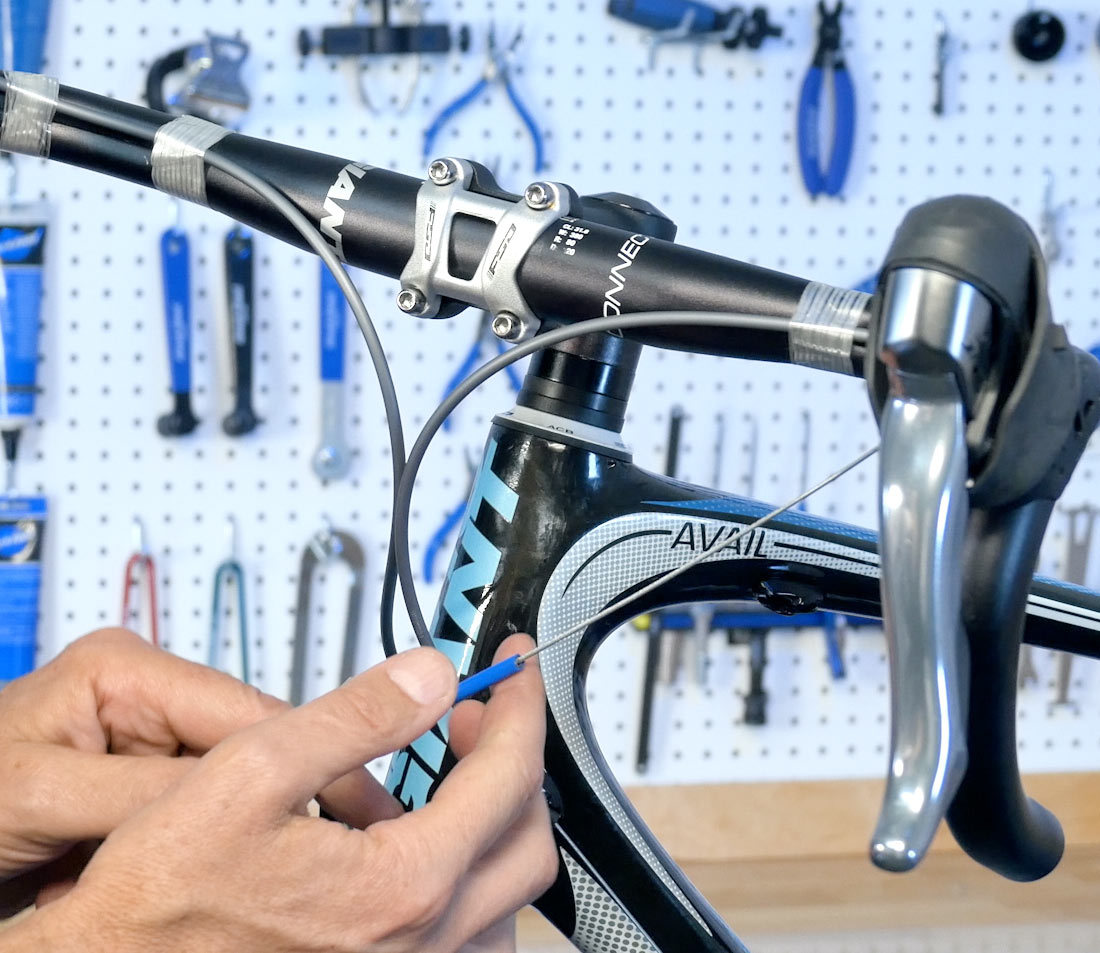Brake Housing & Cable Installation: Drop Bars
This article will review housing and cable installation for drop bar brake levers.
Getting Started
- CN-10 Professional Cable and Housing Cutter
- SP-7 Side Cutter Pliers
- UP-SET Utility Pick Set
- CL-1.2 Chain Lube or other light lubricant
- Brake housing, end caps, and cables
- Mill file (for brake housing as needed)
The brake lever is connected to the brake caliper with the housing. The housing allows the cable to pass through it, going around the frame and down the fork.
There are certain housings that are appropriate for a brake system as well as certain cables. Never use the smaller shift housing as seen in the image below. This housing is not designed for the load of braking and may fail during use.

In the middle example is traditional brake housing called “wound housing.” The plastic sheath has been cut away to show inside. It is very strong in the direction of the force of braking load at the cable . There are often a subtle line pattern showing through the plastic sheath.
The lower example is a woven or braided housing system. Inside is a similar system to the compressionless housing, but with a Kevlar fiber weave on the outside. It is a more expensive system, but it does provide good, rigid, high-performance brake housing.
Sizing Housing
Brake and gear housing allow the wire to be routed around bends and connects the levers to the frame stops. The less drag on the cables, the better the shifting and braking performance. Housing that is too short will kink and bind, creating even more friction. As a rule of thumb, try to size the housing so it is as short as possible but still enters the stops and barrel adjusters in a straight approach.
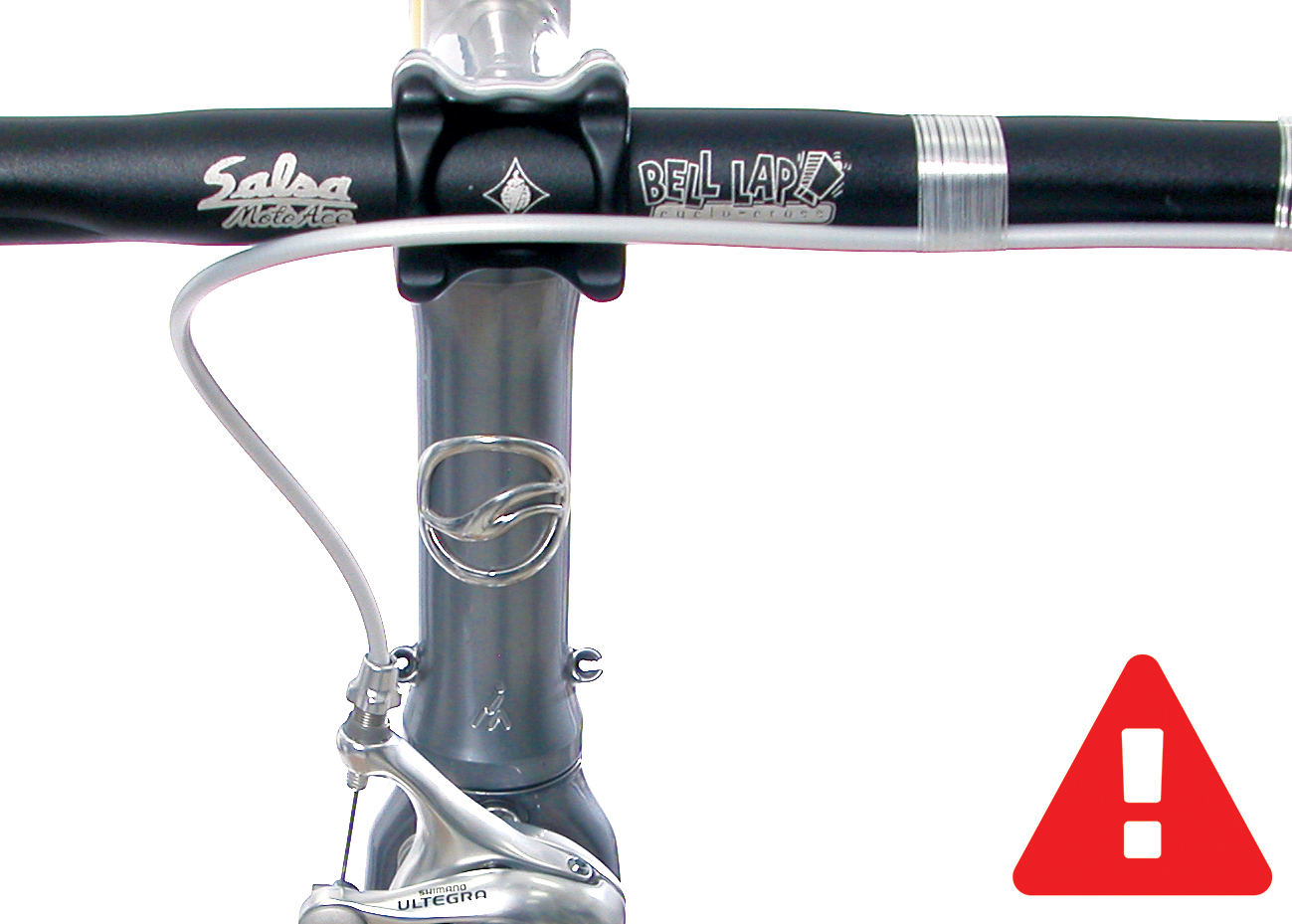
This brake housing is too long. It bends far past the housing stop and has to double back
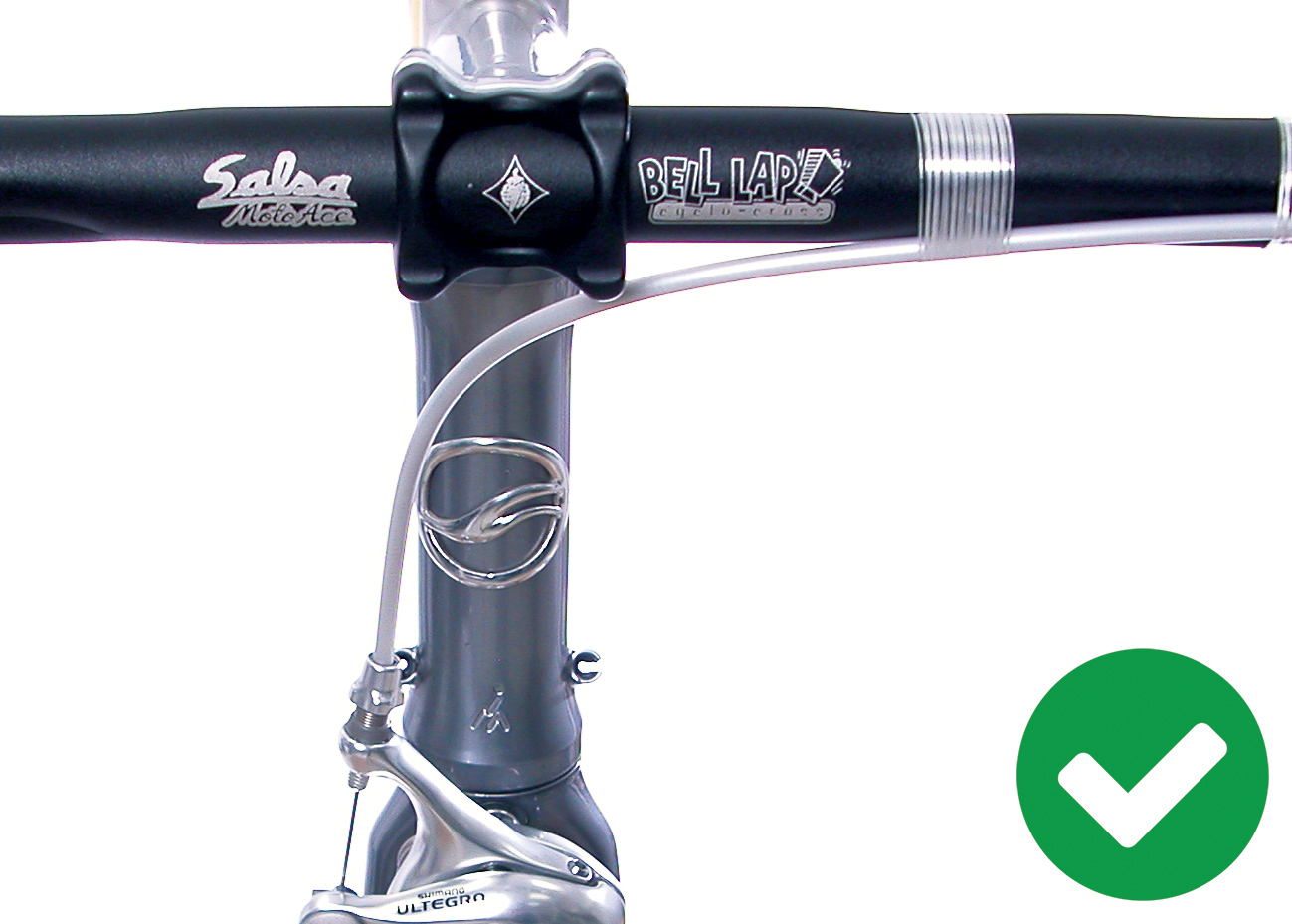
This brake housing is a good length. It arrives at the housing stop in a smooth arc
In the left image above, the housing bends immediately upon leaving the barrel adjuster. This can actually bend the housing end cap. The image to the right shows how longer housing in this case allows the housing to enter straight.
Remember the rider might rotate the bars up, they might flip the stem to get a little bit more height, so from ideal you may want to add just a little bit, but not so much that it creates a difficult path of travel for the brake cable.
Cut and Prep Housing
To cut the wound housing, use the diagonal cutters and reach to the end of the jaws there where there’s the most leverage. A little bit of flex opens up the coils and can help achieve a cleaner cut. Sometimes there will be a sharp burr. Use diagonal cutters to trim being careful not to let a piece of metal fly off.
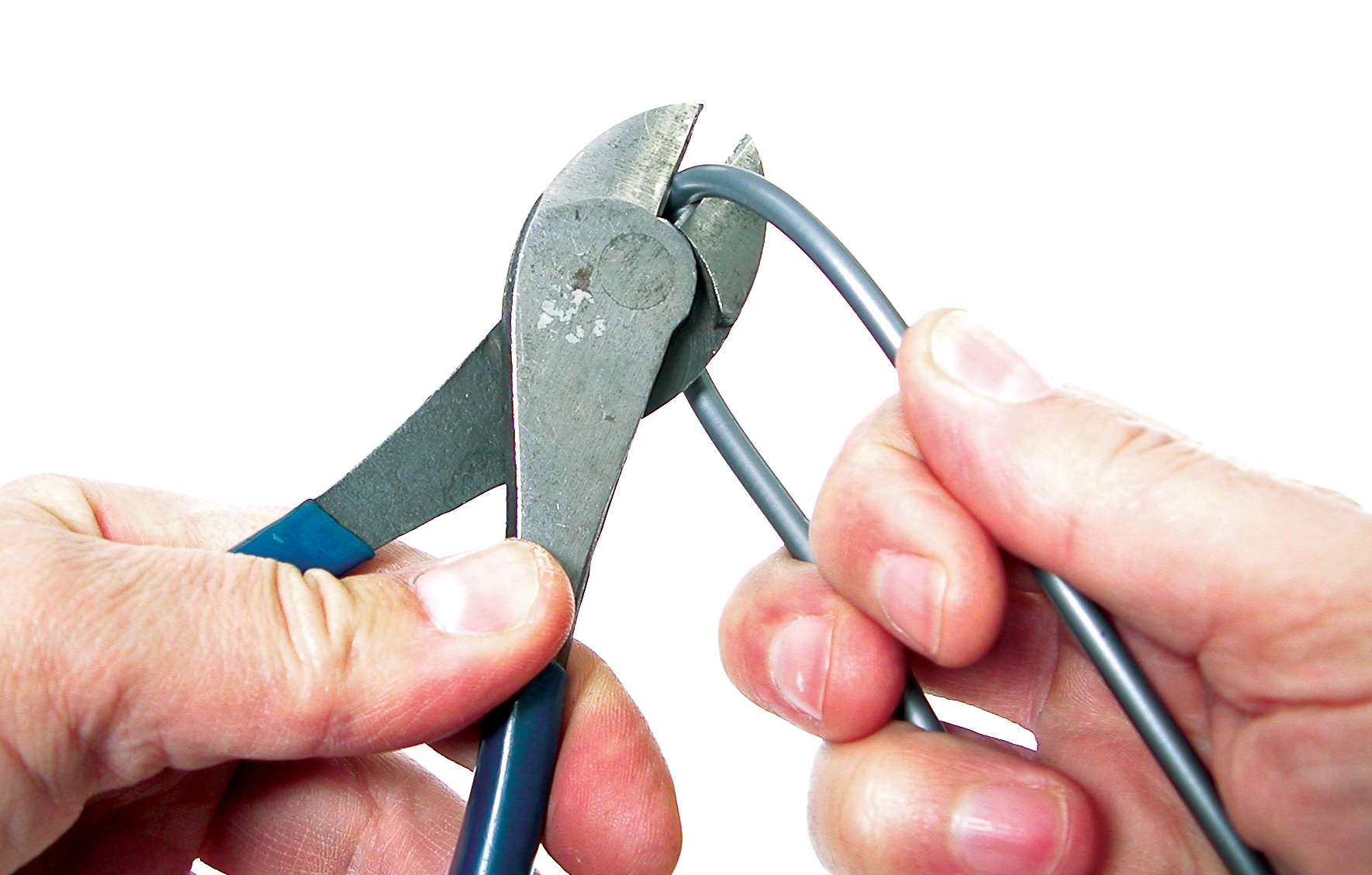
If there’s still a closed end for our plastic liner, it can be opened up with a seal pick. It can now be lubricated with some oil. It is possible to also use a cable cutter, but these are really intended for multi-wire, not the single wire cuts.
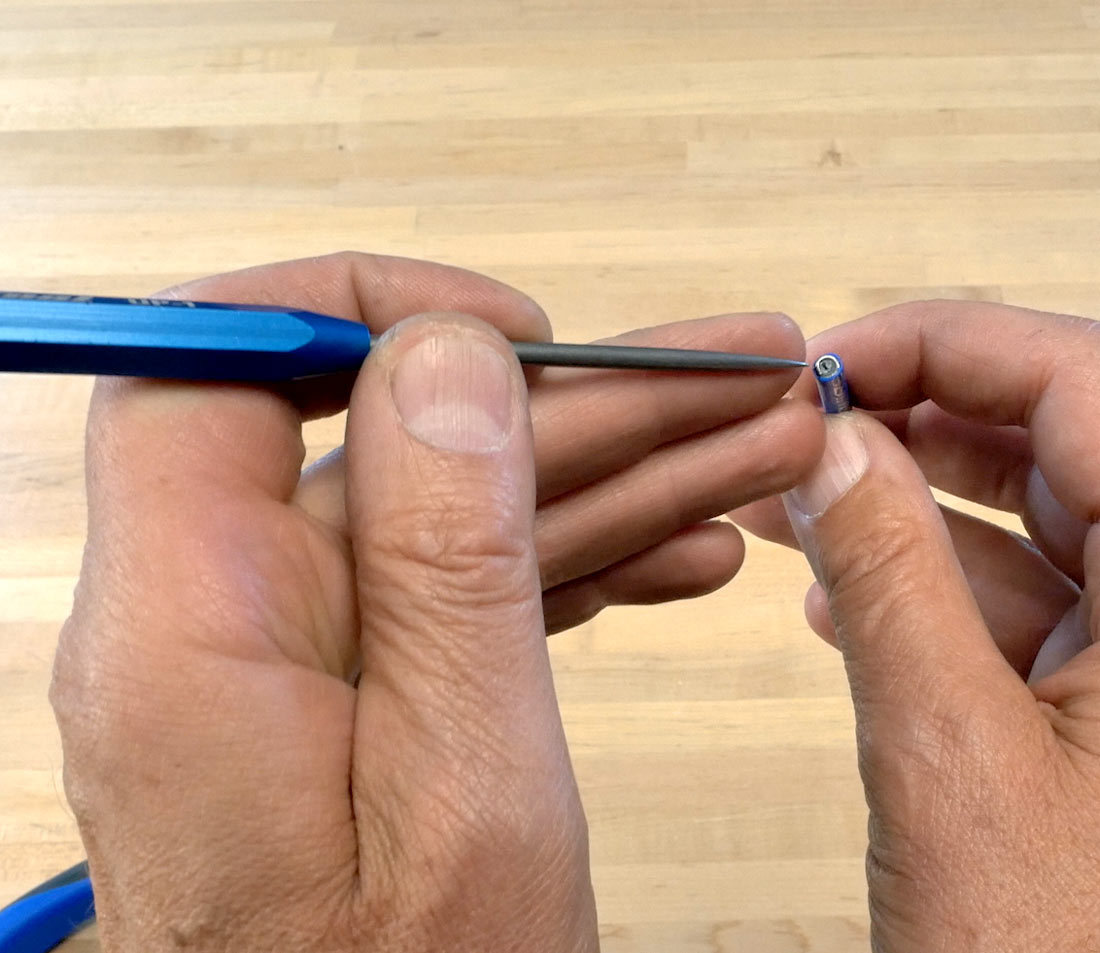
The braided or woven housing does use the cable cutter. Cut cut, hold the housing square to the tool, and squeeze.
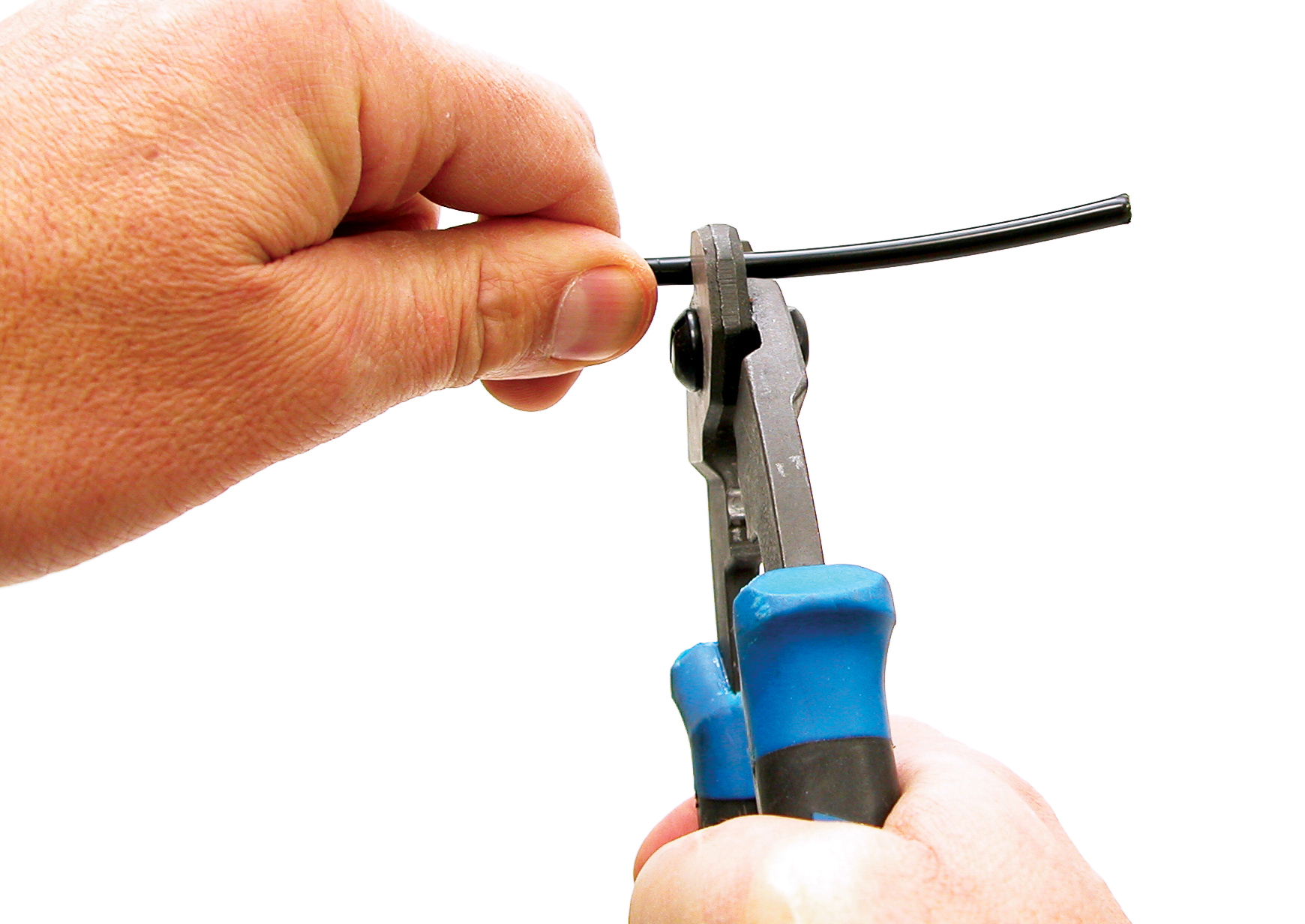
After cutting, the housing may flatten a bit. Use these to CN-10 crimpers to open up the end. Use a seal pick if it’s necessary to open up the inner liner.
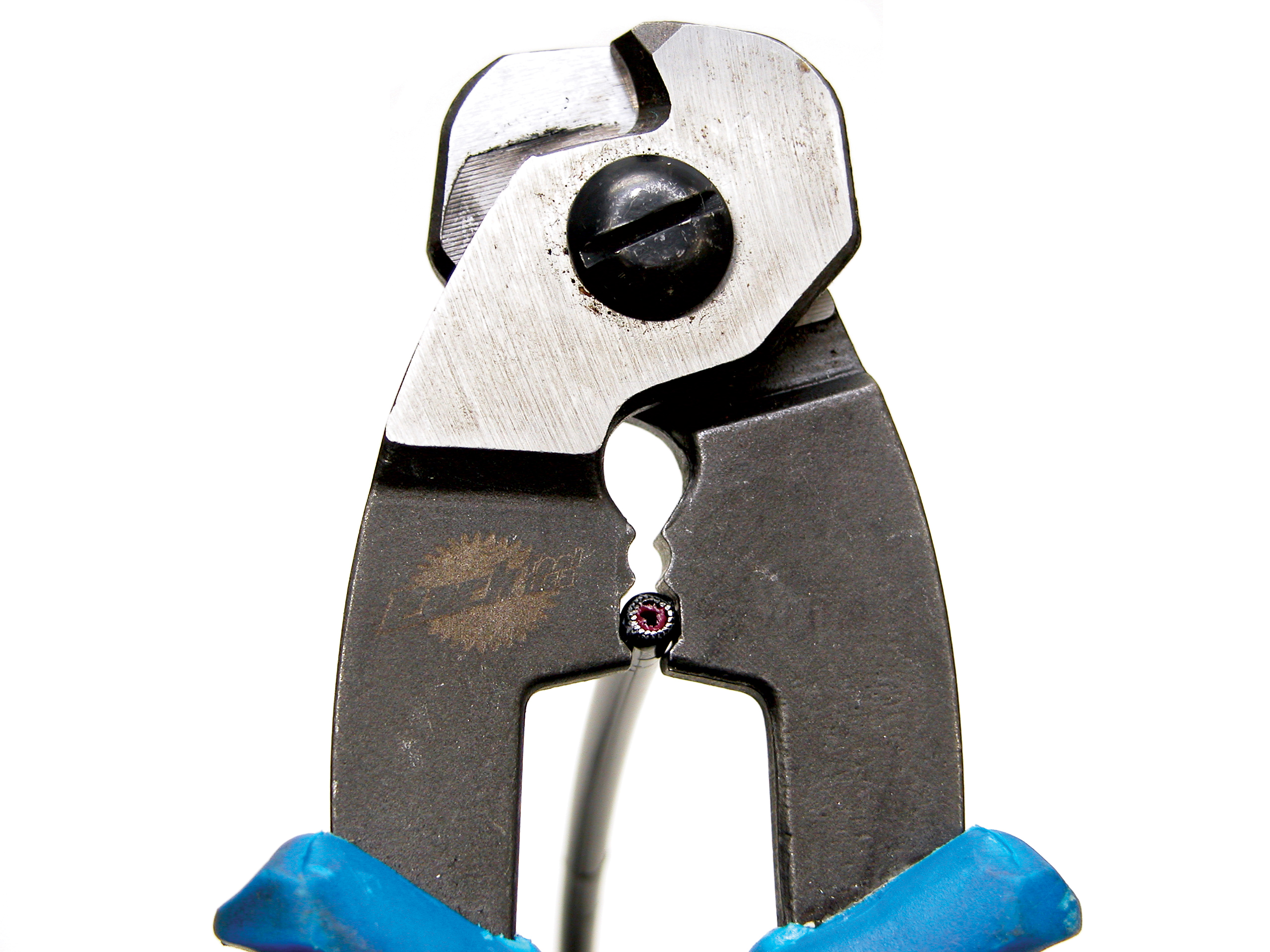
Because of the design of the housing wire, it is not always possible to get a flat, clean cut. It is best to finish any burr with a file. Lightly grinding the end will also improve the housing and reduce friction. NOTE: Compressionless housing does not require finishing.
If there is a burr or sharp end, it can be filed out. When possible, use axle vise such as the AV-5. Use the 5 millimeter opening, have the housing barely stick up and gently snug down the vice. Trim up the burr, and make a nice smooth, level, flat end out of our wound housing.
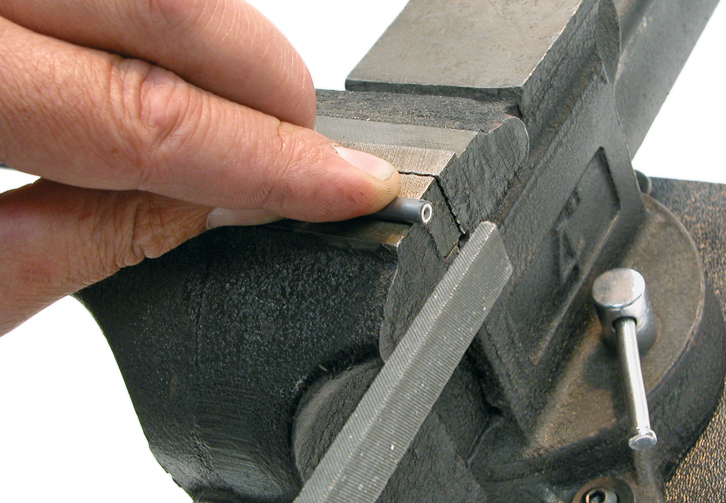
Lubricate inside the liner to provide for the displacement of water.
Whenever an end cap can be used, it should be used. The end cap slides on our housing and provides a very nice end to go into our brake.
However, some models and some brands the end cap simply does not go in. The barrel adjuster a smaller diameter. Effectively the fitting it is its own end cap.
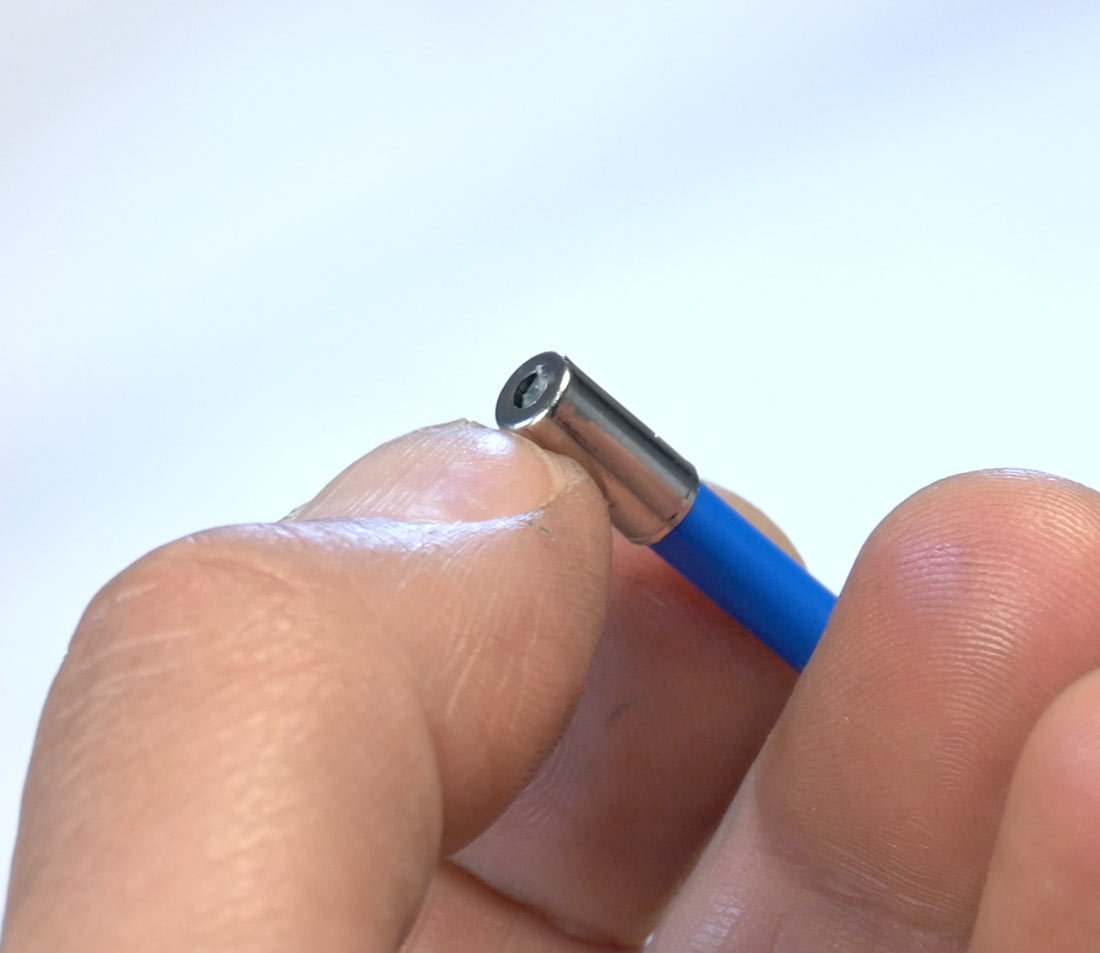
Install Cable and Housing
Drop bar brake levers use the mushroom or teardrop end on a brake cable, not the disc or circular end. Cut off the correct end with cable cutters, and feed the cable through the brake lever into the cable anchor, out the back. Pull it through and make sure the head is properly engaged.
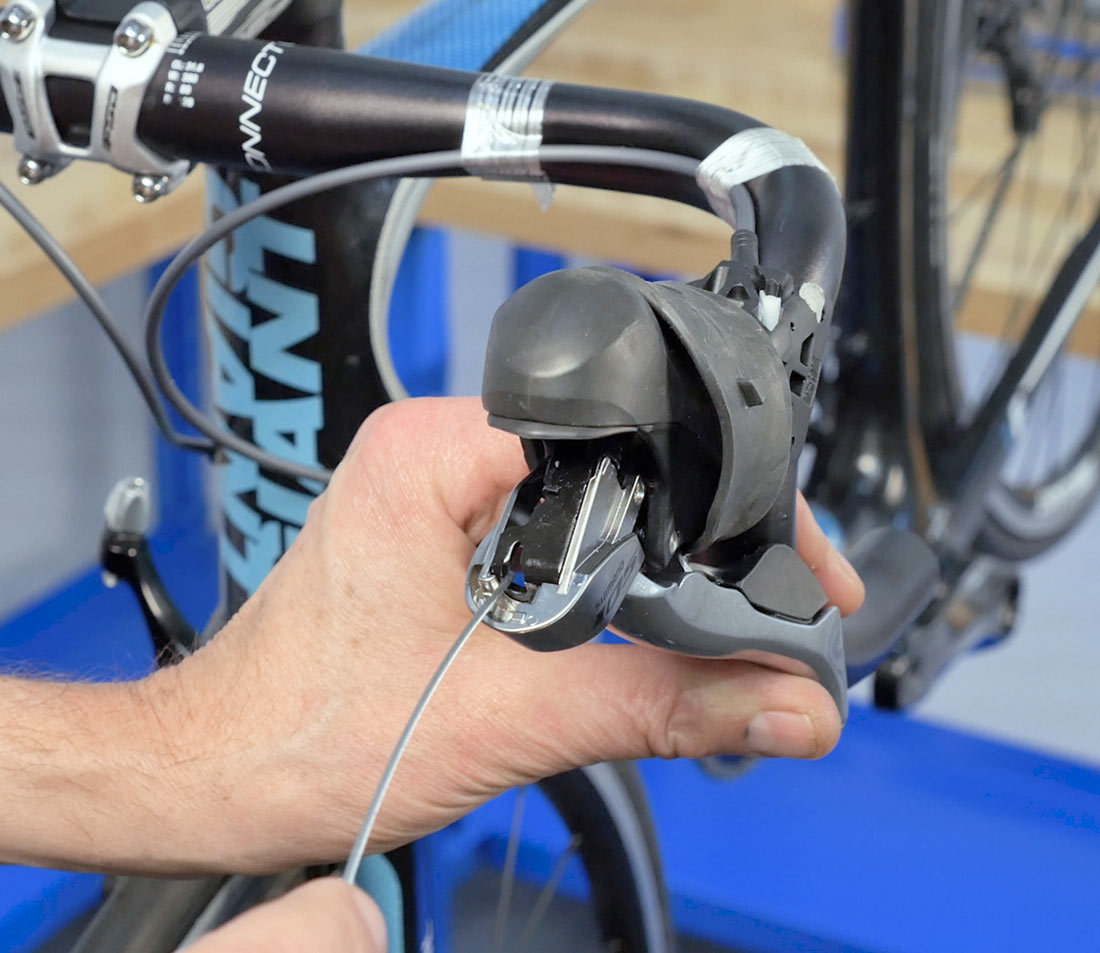
Next, install the housing, cut to length, into the lever body. The housing has stopped inside the body. Route the housing to the brake where a small hole in the barrel adjuster allows the cable to pass through, but it will stop the housing. Hold the housing where our handlebar tape would end and see if the housing is a good length.
